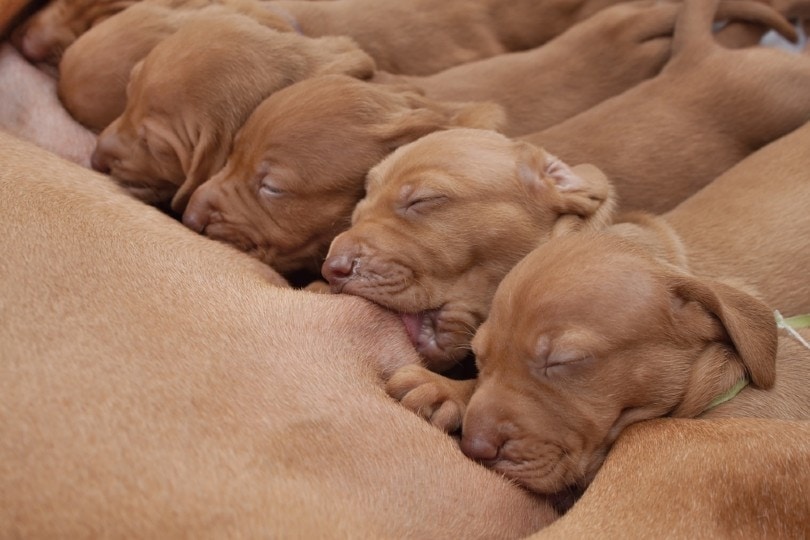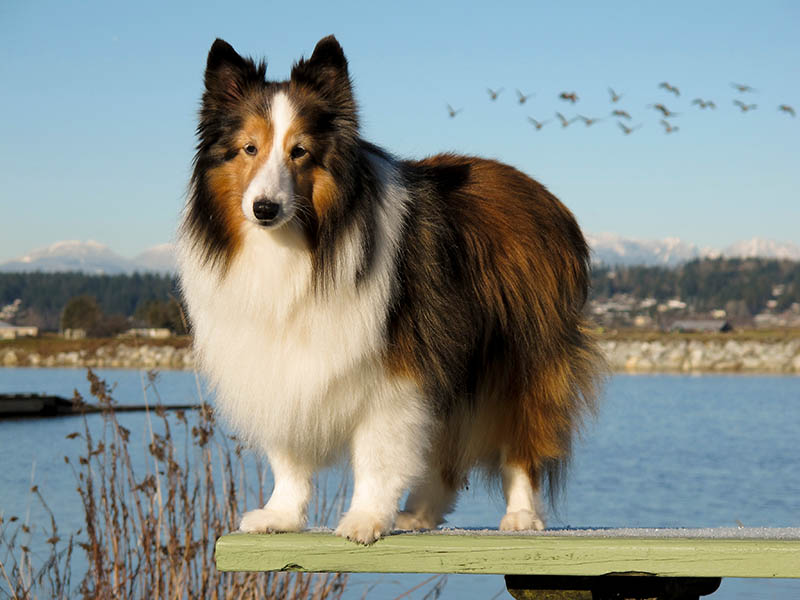How Much Raw Food Do I Feed My Dog? Vet-Approved Nutrition Facts
Updated on
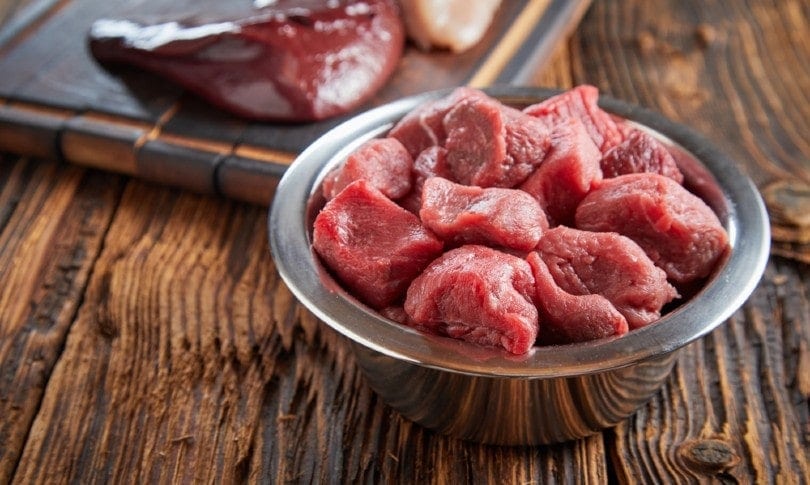
Figuring out how much raw food to feed your dog can be complicated. After all, feeding guidelines aren’t as clear-cut as they are with canned and dry dog food. Plus, the variance of raw food also makes determining how much your dog needs challenging. When you throw in their life stage and exercise level, things can get understandably confusing.
Luckily, there are some basic guidelines you can use to help figure out how much raw food your dog needs. Read on below to find out more.
How Much Raw Food is Ideal for My Dog?
Generally, adult dogs need between 2% and 5% of their total body weight. Where they are within this percentage depends largely on their exercise level.
For the average dog, we recommend around 3% of their body weight each day. For overweight dogs, start closer to 2% and provide them with plenty of activity. We don’t recommend going below this point, even for obese pets, as it can cause nutritional deficiencies.
If your dog is extremely active or underweight, start at 4% and adjust accordingly. Working dogs and those who compete in canine sports may need 5% to keep up with their activity level.
When feeding raw food, you must experiment a bit with how much your dog needs. Generally, this means that you’ll need to watch your dog’s body condition and adjust accordingly. It is recommended that you work with a vet when feeding your dog raw food, as they can help ensure that your dog is meeting their nutritional needs.
Of course, if you’re feeding commercial raw food, then things are a bit different. You should follow the directions on the back of your dog food container.
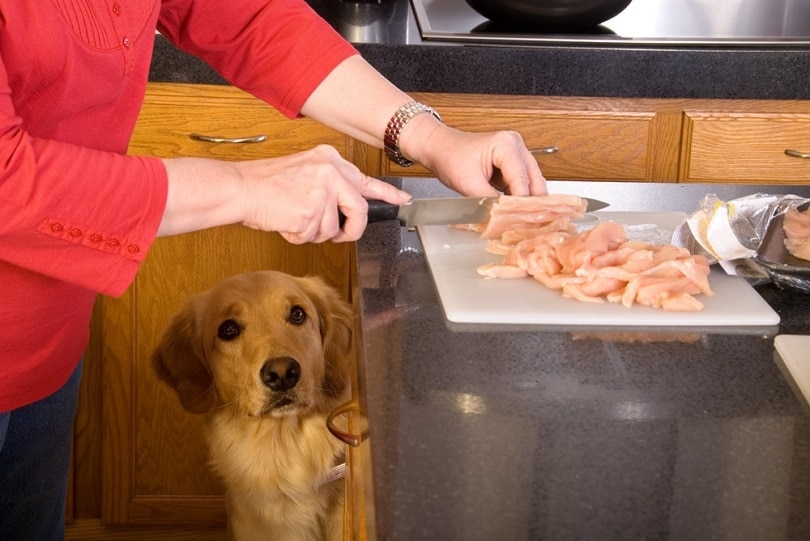
Raw Food Feeding Chart
Here is a basic chart on how much your canine should eat when you’re feeding only raw food. Of course, you should default to any feeding instructions for your dog’s particular diet. However, if you want a baseline or are making your own diet, here’s a quick rundown of how much the average dog needs.
All these feeding amounts are based on a 2% diet so they may need to be increased for canines that are more active.
| Weight | Amount of Food in Pounds |
| 10 lbs | 0.2 lbs |
| 20 lbs | 0.4 lbs |
| 30 lbs | 0.6 lbs |
| 40 lbs | 0.8 lbs |
| 60 lbs | 1.2 lbs |
| 80 lbs | 1.6 lbs |
| 100 lbs | 2 lbs |
- Optimize the benefits of your dog’s diet with our calorie calculator here.
How Do You Calculate How Much Raw Dog Food to Feed?
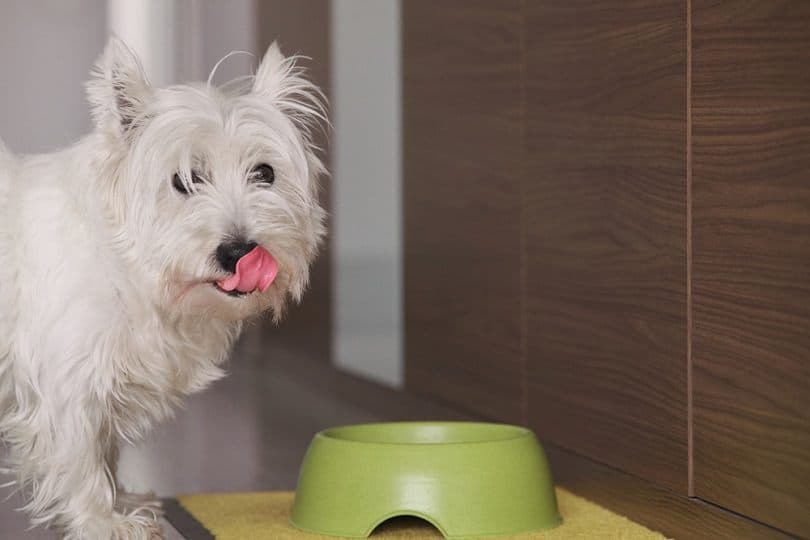
How much raw dog food your dog needs should be calculated based on their body weight. Typically, you’ll need to figure out what percentage of their body weight dogs need to eat each day. While this isn’t a sure calculation since different foods have different weight and calorie densities, it will give you a good idea of how much your dog needs.
For adult dogs, you’ll need to consider their activity level, first and foremost. Here is a basic rundown of the percentage of body weight your dog may need to eat based on their activity level:
- Sedentary: Mostly indoors with very little activity. Often, dogs who are elderly, sick, or generally unwell will fall into this category. 2% needed.
- Average: If your dog spends under an hour moving each day and playing moderately, they probably fit into this category. 3% needed.
- High: For dogs that play much of the day and take longer walks, more calories will be needed. These dogs typically need about 4% of their body weight.
- Working: Dogs that work on a farm, in law enforcement, or have a similarly active dog need many more calories. Often, they need to consume about 5% of their body weight.
Now that you know how much your dog needs to eat, you’ll need to consider its current weight. Dogs that are overweight or obese should be taken down another percentage. However, do not go under 2%, as feeding less than that can cause nutritional problems.
Instead, if your dog is overweight and sedentary, aim to increase their activity instead of lowering their calories.
If your dog is underweight, increase the percentage by a point. Therefore, if your dog is underweight and at an average activity level, feed them 4% instead of the usual 3%. In this way, you can correct your dog’s weight problems efficiently.
Of course, if your dog is underweight or overweight without an obvious cause, then you may want to speak with your vet. There are health problems that can affect how much your dog weighs.
Very small dogs may need to go up one more percent, as well. They tend to burn lots of energy for their body weight. If your dog weighs under ten pounds, knock them up to the next percentage and correct from there.
Now that you have the correct percentage, all you have to do is take that percentage of your dog’s weight. That will give you the amount of food your dog needs to eat each day in pounds. Of course, it’s vital that this food is balanced and appropriate for your dog.
If you’re feeding your dog a raw diet made at home, we recommend working with your vet and using an online calculator. There are many great options out there that will help you design the perfect diet for your dog.
How Many Times a Day Do You Feed Raw Dog Food?
We recommend feeding your canine raw dog food twice a day. This ensures that your dog isn’t going too long between meals. A fasting window of 16-18 hours is ideal. However, that may not work with your schedule, so you can feed them in the morning and the evening.
With that said, this depends on your schedule and your dog. Extremely small dogs need to be fed a lot, as their blood sugar can drop quickly. If you aren’t home until late in the evening, you may decide to only feed your dog in the morning.
Either way, feeding at least twice is usually recommended unless you really can’t. Small dogs need at least two meals. However, larger dogs can get away with just one if your schedule requires it.
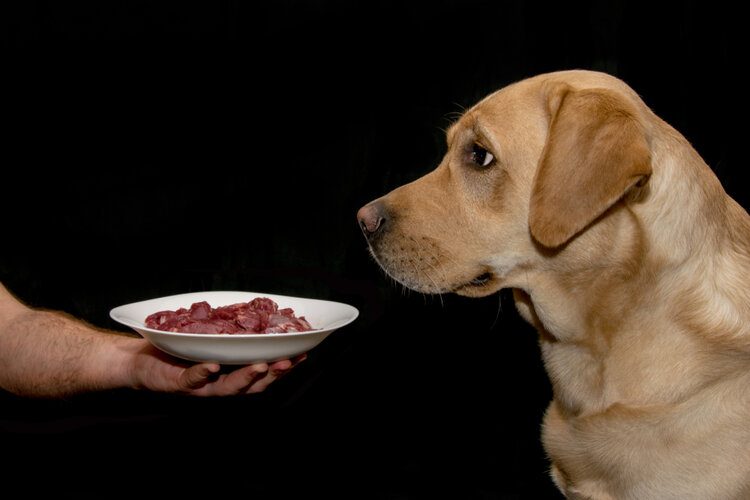
Additional Information to Consider
While these numbers help as a guideline, the food weight does not reflect the caloric content or macronutrient ratio in the food. For example, there is a huge difference in the fat percentage and caloric content between lean and fatty meat. It is important to feed only adequately formulated raw food diet recipes that are complete and balanced. Well-designed raw food recipes contain all the necessary nutrients in the correct ratio plus any needed supplementation. Closely monitoring your dog’s body condition is very important, and getting advice from a professional is always a good idea.
Conclusion
Feeding your canine raw food can be challenging. You’ll need to do a lot of the math yourself, as these foods don’t usually come with an easy feeding guide. A lot also depends on your dog’s activity level and size.
Luckily, there are some basic guidelines you can follow to make everything much simpler. Here’s a quick rundown of how to calculate how much raw food your dog needs:
- Determine their activity level, as described above. That’s your starting percentage.
- Determine if they need to lose or gain weight. Adjust as necessary.
- If your dog is under 10 pounds, move up another percentage.
After you know how the percentage of their body weight that your dog needs to eat, you can do the calculation. Often, you can use a calculator for this, as most of these calculations are difficult to do in your head unless your dog is exactly 100 pounds.
Featured Image Credit: stockcreations, Shutterstock




